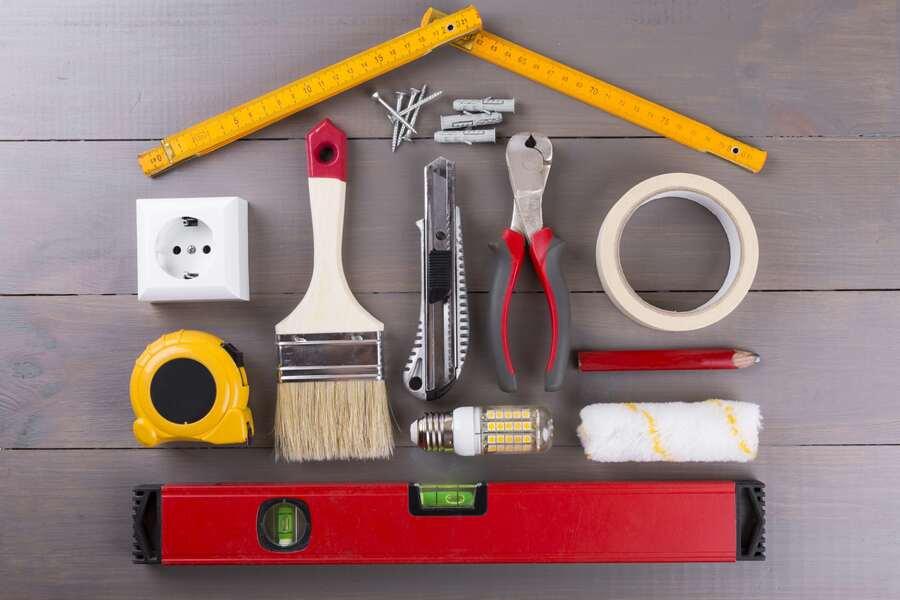11 Handy Hints for DIYers and Homeowners

Whether you're tackling a weekend project or performing routine home maintenance, having the right knowledge and tools can make all the difference. DIYers and homeowners can save time, money, and effort by applying practical tips and using quality products suited for their specific tasks. From organizing your workspace to choosing the right fasteners, these 11 handy hints will help you work smarter, safer, and more efficiently on any home or building project.
1. Plan Before You Start
One of the most overlooked steps in any DIY project is planning. Jumping into a task without a clear idea can lead to wasted materials, unexpected challenges, and unnecessary expenses.
Tip: Sketch a basic layout, list required materials, and identify potential obstacles. For larger projects, such as decking or wall framing, consider consulting building codes or professional guidance.
2. Invest in Quality Tools and Hardware
Low-cost tools may be tempting, but they often underperform and wear out quickly. The same applies to fasteners and fittings—poor-quality items can compromise your work.
Tip: Choose durable, brand-name tools and high-quality screws, nails, and anchors. For example, stainless steel or galvanized fasteners offer better longevity in outdoor or high-moisture environments.
3. Measure Twice, Cut Once
A classic rule of thumb in any construction or DIY task, accurate measurement can save time and prevent material waste.
Tip: Use a reliable tape measure or laser level, and mark your cuts carefully. Double-check your dimensions before making irreversible cuts on wood, tile, or drywall.
4. Use the Right Fasteners for the Job
Many DIYers and homeowners use whatever screw or nail is on hand, but not all fasteners are created equal.
Tip: Match fasteners to your materials. Wood screws for timber, masonry anchors for concrete, and self-tapping screws for metal ensure proper holding strength and safety. Choosing the right type also prevents splitting, stripping, and corrosion.
5. Prep Your Workspace
A cluttered or unsafe workspace can lead to accidents and slow you down.
Tip: Keep your area clean, organized, and well-lit. Use toolboxes, pegboards, or drawer organizers to sort your gear. For larger projects, set up tarps or plastic sheeting to protect surfaces.
6. Use Anchors for Hanging Heavy Items
When hanging shelves, TVs, or cabinets, many DIYers underestimate the weight support needed, especially in drywall.
Tip: Use wall anchors or toggle bolts designed for the wall material and item weight. Stud finders can help locate framing for more secure mounting when needed.
7. Seal and Weatherproof Properly
DIY repairs and installations on doors, windows, and outdoor structures are often prone to moisture intrusion if not sealed correctly.
Tip: Use weatherproof caulking, foam insulation, or rubber gaskets to seal joints and gaps. Choose materials labeled for outdoor or high-moisture use to prevent mold, water damage, and heat loss.
8. Drill Pilot Holes in Hard Materials
Driving screws into hardwood, dense composites, or metal without a pilot hole can cause cracks or damage.
Tip: Drill pilot holes slightly smaller than the screw diameter to reduce stress and improve driving ease. For masonry or tile, use a hammer drill with appropriate bits.
9. Keep Safety First
Even small DIY projects can pose risks—power tools, ladders, and sharp tools all demand attention and respect.
Tip: Always wear appropriate PPE (personal protective equipment) like gloves, goggles, and hearing protection. Ensure ladders are stable, and don’t bypass safety features on power tools.
10. Upgrade with Energy Efficiency in Mind
When replacing insulation, lighting, or HVAC components, DIYers and homeowners have a great opportunity to improve energy efficiency.
Tip: Choose LED lights, smart thermostats, low-VOC paints, and insulated windows or doors. These upgrades save on utility bills and improve indoor comfort.
11. Keep a DIY Journal or Log
Tracking what you’ve done around the home can save time in future repairs or renovations.
Tip: Maintain a notebook or digital log of projects, materials used, paint colors, and service dates. This record can be especially helpful when troubleshooting issues or selling your home.
Conclusion
Gstarboard: Home improvement projects don’t have to be intimidating. With the right mindset, tools, and information, DIYers and homeowners can accomplish impressive results while maintaining safety and quality. Each of these tips offers a way to work more efficiently and achieve better outcomes—whether you're hanging a picture frame, building a pergola, or upgrading your insulation.
By integrating these handy hints into your DIY routine and selecting high-quality products tailored to your needs, you can extend the life of your work, reduce maintenance issues, and enjoy greater satisfaction from every project you complete.
- Art
- Causes
- Crafts
- Dance
- Drinks
- Film
- Fitness
- Food
- الألعاب
- Gardening
- Health
- الرئيسية
- Literature
- Music
- Networking
- أخرى
- Party
- Religion
- Shopping
- Sports
- Theater
- Wellness


